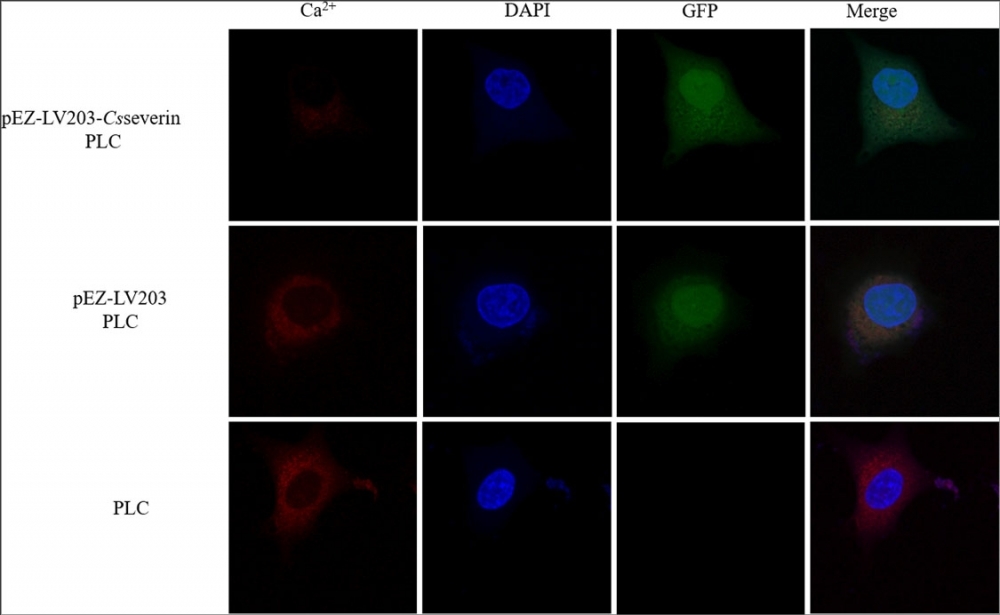Rhod-2, AM
CAS#: 145037-81-6
Calcium measurement is critical for numerous biological investigations. Fluorescent probes that show spectral responses upon binding Ca2+ have enabled researchers to investigate changes in intracellular free Ca2+ concentrations by using fluorescence microscopy, flow cytometry, fluorescence spectroscopy and fluorescence microplate readers. The long-wavelength Rhod-2 Ca2+ indicators are valuable alternatives to Fluo-3 for experiments in cells and tissues that have high levels of autofluorescence. Rhod-2 AM is cell-permeable version of Rhod-2.


| Catalog | Size | Price | Quantity |
|---|---|---|---|
| 21060 | 1 mg | Price |
Physical properties
| Dissociation constant (Kd, nM) | 570 |
| Molecular weight | 1123.96 |
| Solvent | DMSO |
Spectral properties
| Excitation (nm) | 553 |
| Emission (nm) | 577 |
| Quantum yield | 0.1 1 |
Storage, safety and handling
| H-phrase | H303, H313, H333 |
| Hazard symbol | XN |
| Intended use | Research Use Only (RUO) |
| R-phrase | R20, R21, R22 |
| Storage | Freeze (< -15 °C); Minimize light exposure |
| UNSPSC | 12352200 |
| CAS | 145037-81-6 |
Instrument settings
| Fluorescence microscope | |
| Excitation | TRITC filter set |
| Emission | TRITC filter set |
| Recommended plate | Black wall/clear bottom |
| Fluorescence microplate reader | |
| Excitation | 540 |
| Emission | 590 |
| Cutoff | 570 |
| Recommended plate | Black wall/clear bottom |
| Instrument specification(s) | Bottom read mode/Programmable liquid handling |
Contact us
| Telephone | |
| Fax | |
| sales@aatbio.com | |
| International | See distributors |
| Bulk request | Inquire |
| Custom size | Inquire |
| Technical Support | Contact us |
| Request quotation | Request |
| Purchase order | Send to sales@aatbio.com |
| Shipping | Standard overnight for United States, inquire for international |
Page updated on September 20, 2024

